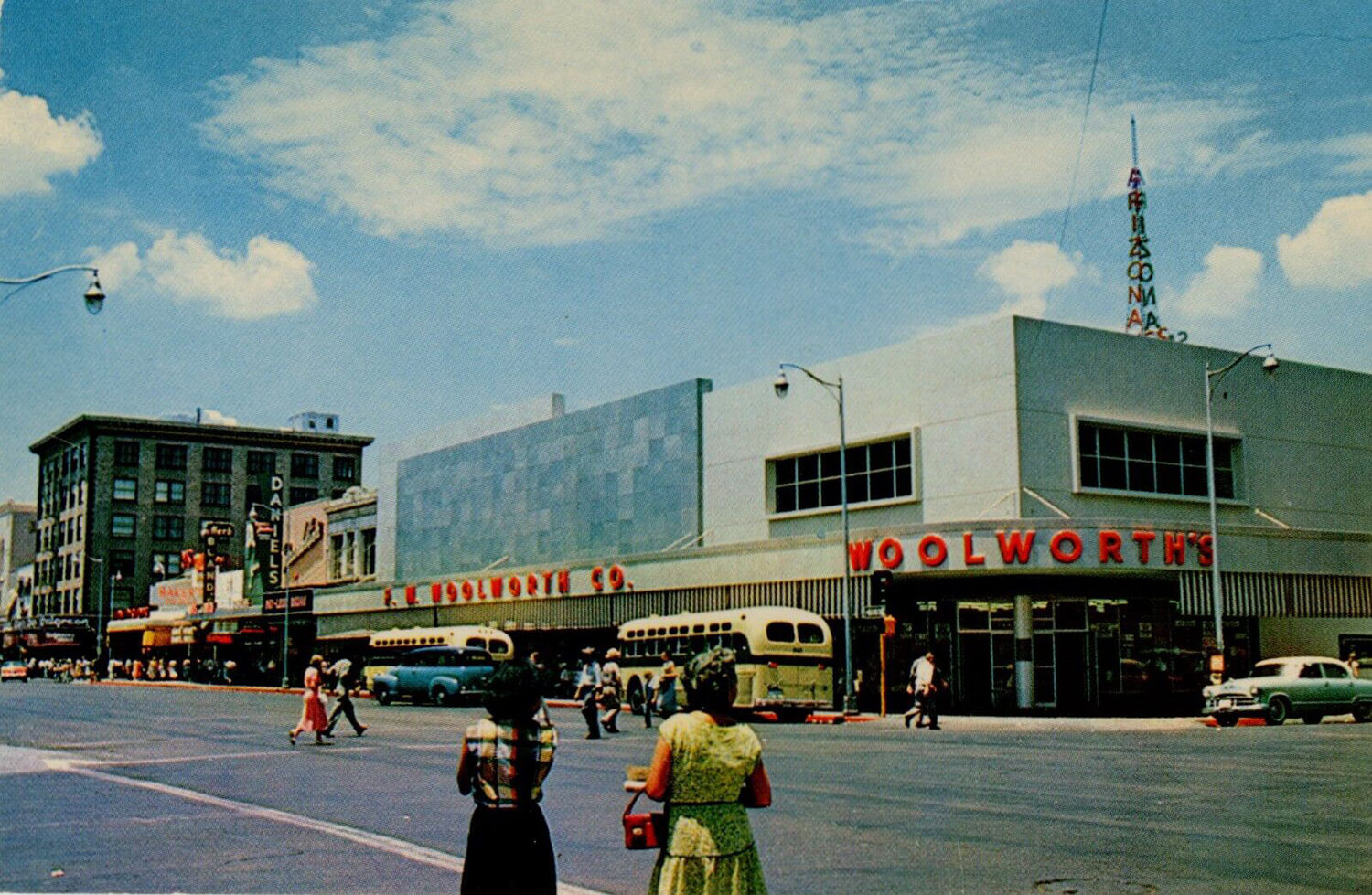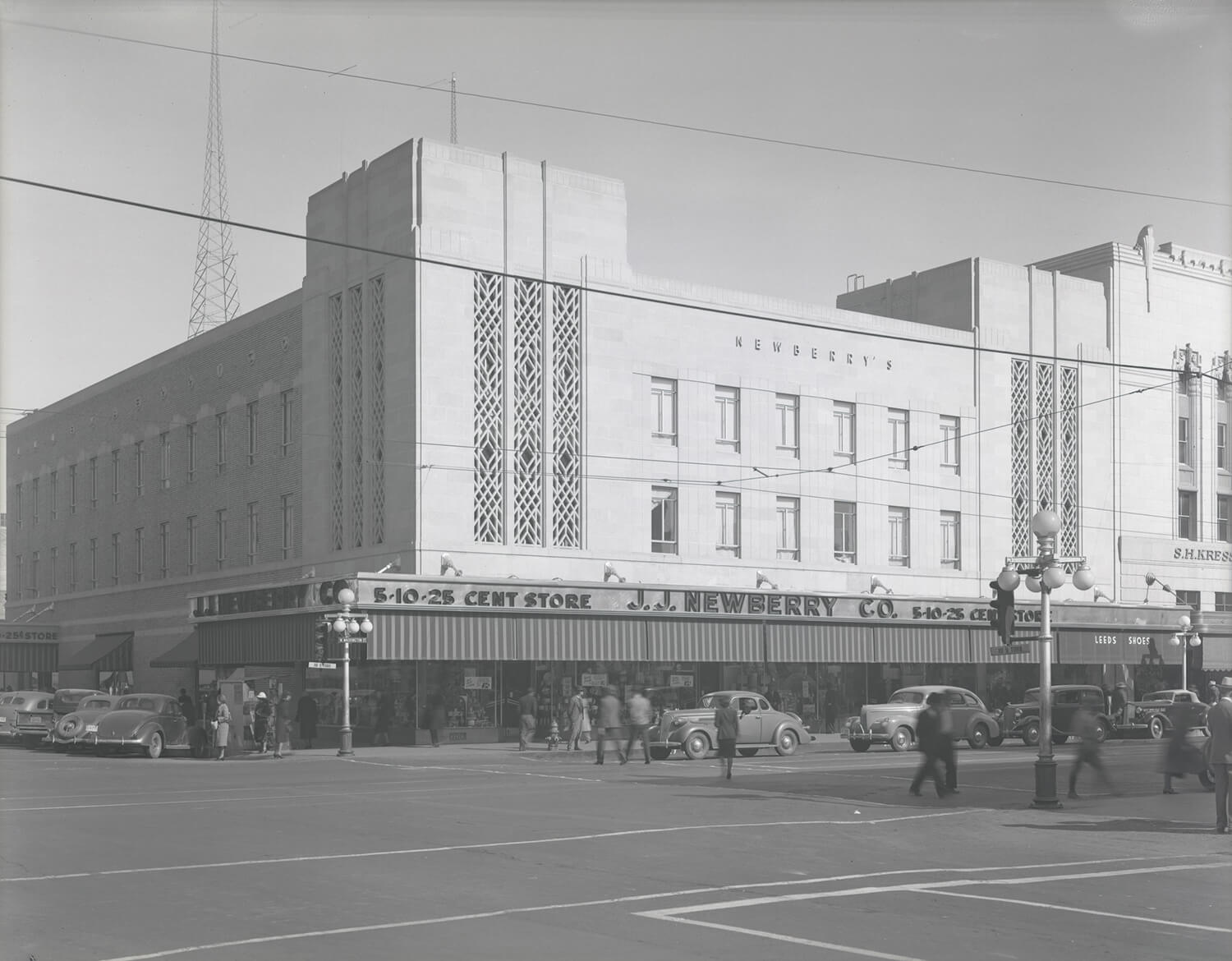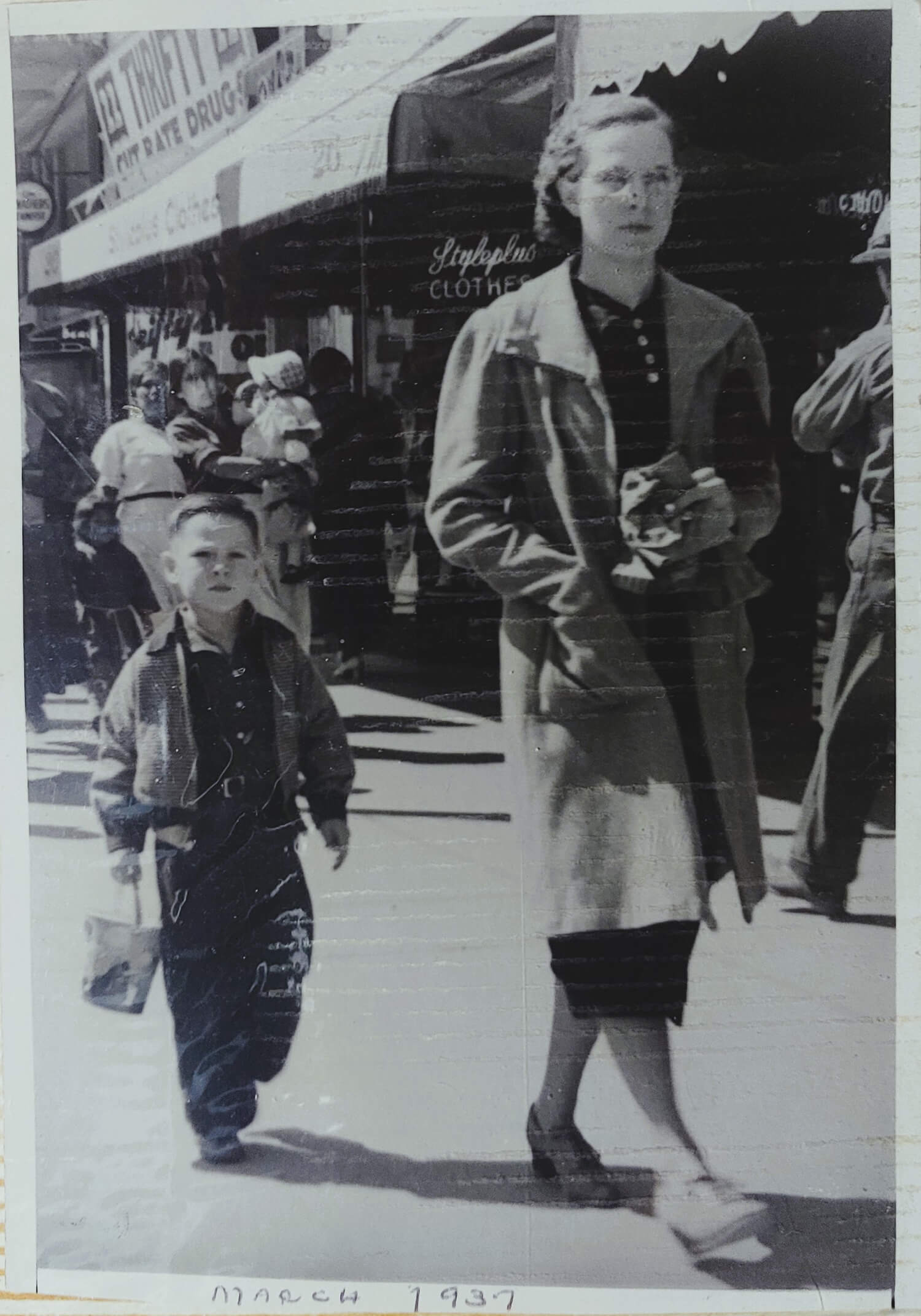Bill Baker is one of the few people who can visualize Downtown Phoenix stretching back to the Great Depression in the late 1930s.
“Downtown was where people went for most things,” recalls the 90-year-old Phoenix native. “For doctors, dentists, and lawyers, many had offices in the Luhrs Tower and the Professional Building. But for basic supplies, there was a stretch of Washington Street, just east of Central Avenue, where a lot of the action happened.”
Baker says that among the banks, jewelry, and drug stores, his family went to three large stores: J.J. Newberry, F.W. Woolworth, and S.H. Kress, located nearly next to each other on the north side of Washington Street. “We called them “dime stores,” but they were more properly named “five & dime stores,” Baker says. “Newberry’s was the family favorite.”

F.W. Woolworth Co. store. (Photo: Phoenix Public Library)
“Mom was a great seamstress and bought her sewing supplies and other household items at these stores,” Baker says. “She made shirts for Dad and me.”
Baker recalls the dime stores as prominent, sprawling places with lunch bars offering sandwiches at reasonable prices. “My grandma lived on rural Mojave Street before they had mail delivery, so she had a postal box downtown,” Baker says. “She used to give me a quarter to take the bus downtown and pick up her mail. The bus ride was a nickel each way, and the extra 15 cents was for me to buy a chocolate soda at Newberry’s, which I loved.”
Phoenix had about 65,000 residents in 1940, compared to the 1.6 million who now call the city home.

J.J. Newberry Co. store, 1941. (Photo: McCulloch Bros.)
Cameras were still rare then, so there were photographers who took pictures of pedestrians. “They subsequently handed people a card they could take into the nearby drug store to purchase the images later,” he says. “Mom bought a few of those photos that I still have.”
Across from the dime stores on the south side of Washington Street was the Penny Arcade. “They had Skee-ball machines that I liked and other vintage games, all for a penny,” Baker says.
Upton’s Malt Shop was near the Penny Arcade. His Uncle Buck managed the shop, renowned for its malted milkshakes. “You could sprinkle nutmeg on them; they were much better than the milkshakes that are now sold,” he says.
Upton’s also had sodas made to order, with a line of taps with various flavors. “So, if you asked for a Coke, they would put some ice in a glass, then a squirt of cola flavor and fill it up with seltzer water, all out of taps. You could also get a special Coke with a squirt of cherry or other flavors.”
Baker said other sweet things occurred at the Upton’s Malt Shop. “At the start of World War II, Uncle Buck’s sister, Betty, worked there as a soda jerk,” he says. “She met a soldier named Clarence, whom she married. He went to Europe and served till the end of the war.” Unfortunately, the relationship soured as the couple divorced a few years later.

Bill Baker walking with his mother, Iva Baker, in Downtown Phoenix, 1937. (Photo: Bill Baker)




